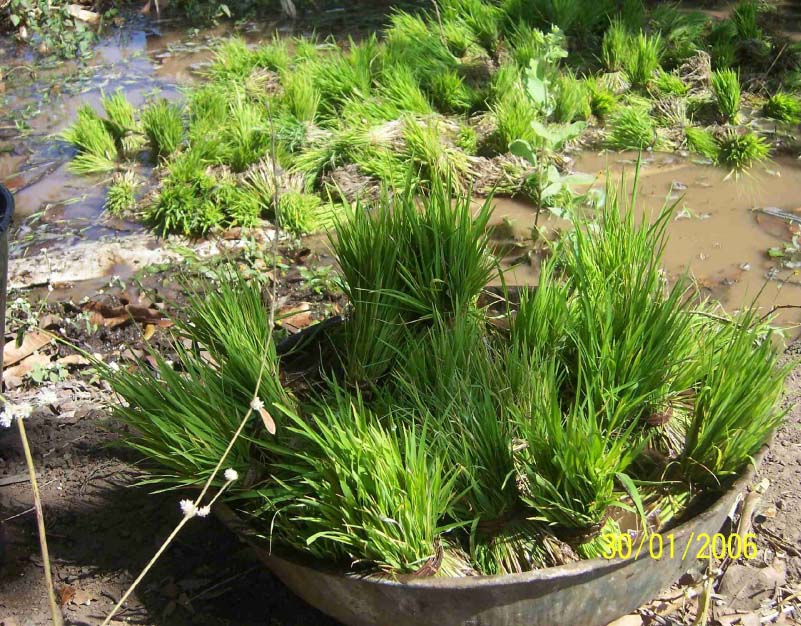/topics/health
Health
Introduction to organic, natural, sustainable agriculture - Presentations from the South Asia Conference on "Outstanding Organic Agriculture Techniques", Bangalore organised by OFAI (2009)
Posted on 20 Mar, 2011 05:44 PM This set of presentations from the conference on Outstanding Organic Agriculture Techniques held during September 2009 at Bangalore provides an introduction to organic farming, and bringing together various issues related to organic farming.
This set of presentations from the conference on Outstanding Organic Agriculture Techniques held during September 2009 at Bangalore provides an introduction to organic farming, and bringing together various issues related to organic farming.
Organic farming can feed the world
This presentation by Claude Alvares, deals with the work of India’s organic farming community and the Organic Farming Association of India (OFAI). It states that the best organic farmers look to the forest for their learning. It details out how one raises plants (or trees) without – (a) NPK (b) Dams and canal irrigation (c) Tractors (d) Pesticides, weedicides, fungicides, homicides (e) Bank credit or bank extension officers (f) Agricultural scientists or universities (g) Negative environmental effects like climate change and (h) Water pollution.
Kerala's bill to penalise Coke - Relief and compensation for Plachimada factory victims
Posted on 01 Mar, 2011 02:39 PM'The Bill proposes to get compensation from the company and to form a tribunal to provide time-bound compensation. The tribunal is to have a chairman, a technical member and an administrative member'.
Posters on the factors responsible for excess fluoride and fluorosis by MASS Education
Posted on 01 Feb, 2011 12:01 PM
Click on the below posters to know more
Summary report - Maharashtra government consultation on Ratnagiri and Sindhudurg districts - MoEF
Posted on 31 Jan, 2011 12:12 AMContent Courtesy: Ministry of Environment and Forests, Government of India
Author: Madhav Gadgil
In view of the environmental sensitivity and ecological significance of the Western Ghats region and the complex nature of its geography, as well as the possible impacts of climate change on this region, the Ministry of Environment & Forests, Government of India constituted a Western Ghats Ecology Expert Panel to assess the current status of ecology of the Western Ghats region. The panel aimed at identifying ecologically sensitive areas in the Western Ghat region and making recommendations for the conservation, protection and rejuvenation of the region. This report presents a brief summary of the key issues that were dwelt on to understand the situation of the Western ghats and the key findings of the evaluation.
Compilation of 300 hands on field activities for community based adaptation
Posted on 20 Jan, 2011 01:42 PM
 This collection of CBA field activities began as a resource for online CBA students. However, as it grew, we decided that it was important to make it more broadly available to CBA development practitioners worldwide. The activities are organized in the following framework.
This collection of CBA field activities began as a resource for online CBA students. However, as it grew, we decided that it was important to make it more broadly available to CBA development practitioners worldwide. The activities are organized in the following framework.
24th national convention of IPHE (India) on "Water & sanitation utility services in India and their health implications" held in Bhubaneshwar
Posted on 18 Jan, 2011 11:49 PMThe 24th National Convention of Institution of Public Health Engineers (India) on the theme “Water & Sanitation Utility Services in India and their health implications” will be organised by IPHE(I), Regional Centre, Bhubaneswar during 12th -13th February,2011.
Managing Natural Resources -A report by IDSAsr
Posted on 18 Jan, 2011 04:24 PMThe scarcity value of natural resources has risen due to rising pressure of human population and demands made by modern economics progress. As such managing these resources has become very important.
Articles on rainwater harvesting and river pollution by Janhit Foundation
Posted on 18 Jan, 2011 04:18 PMThese Articles analyse and detail the issues of rainwater harvesting and river pollution
Benchmarking local government performance on rural sanitation in Himachal Pradesh - A learning note by WSP
Posted on 06 Jan, 2011 06:43 AMThis document deals with benchmarking local government performance on rural sanitation in Himachal Pradesh. To strengthen outcome-focused management of the rural sanitation sector in India, the Water and Sanitation Program’s (WSP) Global Scaling Up Sanitation Project, in partnership with the Government of Himachal Pradesh, developed a five-step process to monitor and benchmark performance on a monthly basis across all twelve districts in the state. Applied at the local government (district) level, this process has proven to be an effective approach, one that can improve reporting, monitoring, and performance.
Maharashtra Groundwater (Development and Management) Bill (2009)
Posted on 05 Jan, 2011 07:32 PMThe Maharashtra Groundwater (Development and Management) Bill, 2009 aims to facilitate and ensure sustainable and adequate supply of groundwater of prescribed quality, for various category of users, through supply and demand management measures, protecting public drinking water sources and to establish the State Groundwater Authority and District Level Authorities to manage and to regulate, with community participation, the exploitation of groundwater within the State of Maharashtra.





